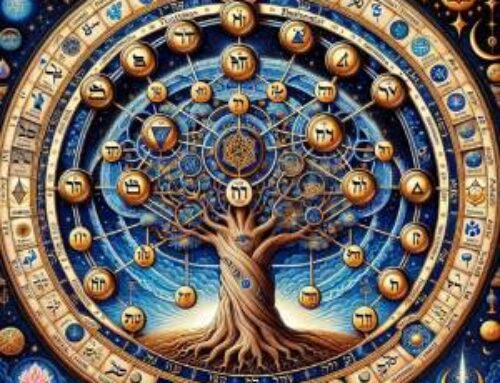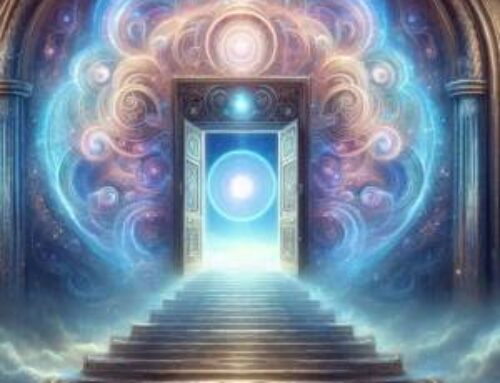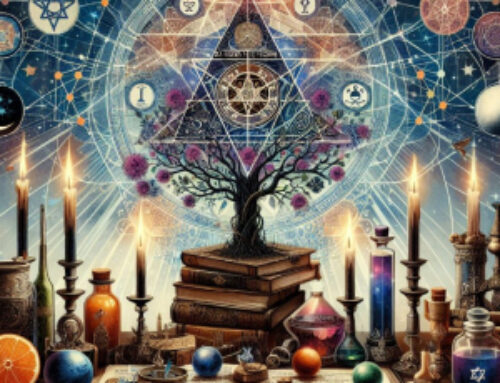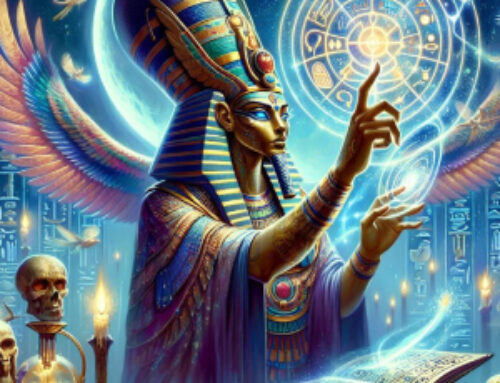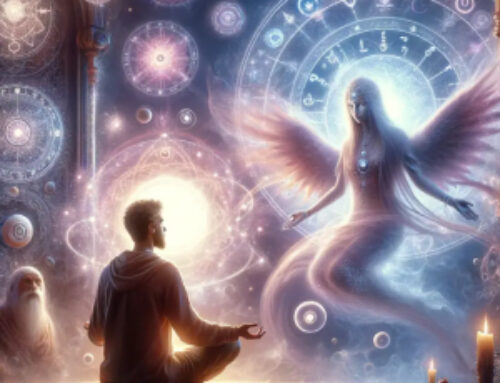Contents
- 1 Introduction to Western Esotericism and Rituals of Initiation
- 2 The Ancestral Threads of Western Esotericism and Rituals of Initiation
- 2.1 The Greek and Roman Legacy
- 2.2 A Rekindling of Ancient Wisdom
- 2.3 Alchemy
- 2.4 The Mystical Bridge of Western Esotericism and Rituals of Initiation
- 2.5 Key Rituals of Initiation in Western Esoteric Traditions
- 2.6 Egyptian and Greek Rites
- 2.7 Alchemy, Astrology, and Theurgy
- 2.8 The Rosicrucian and Masonic Legacy
- 3 The Role of Symbolism and Allegory in Esoteric Initiations
- 4 Modern Interpretations and Practices of Esoteric Initiation Rituals
- 5 The Impact of Western Esoteric Traditions on Contemporary Spiritual Practices
- 6 The Misconception of Esoteric Wisdom in New Age Practices
- 7 The Integration of Hermetic Principles in Esoteric Rituals of Initiation
- 8 Conclusion of Western Esotericism and Rituals of Initiation
- 9 FAQ – Western Esotericism and Rituals of Initiation
- 10 References:
Introduction to Western Esotericism and Rituals of Initiation
The pursuit of arcane knowledge, hidden within the heart of Western Esotericism and Rituals of Initiation, is a legacy as old as time. From the dust of Ancient Egypt to the intellectual vigour of the Renaissance, this odyssey is not just in seeking the Divine but in the unyielding human endeavor to grasp the stars, to unravel the secrets of nature, and to find our sacred place within the grand design.
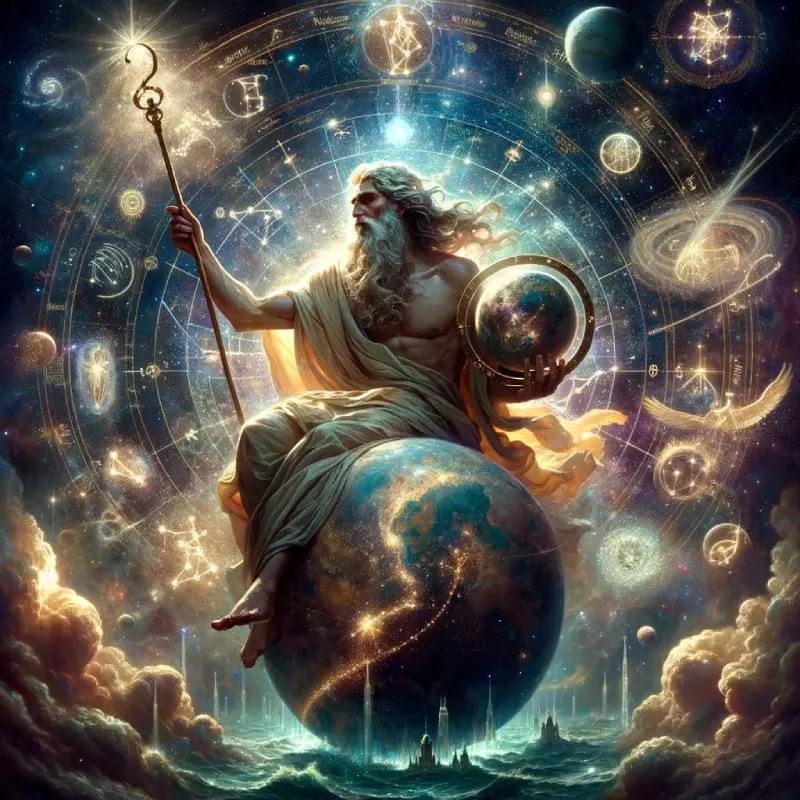
Western esotericism, with its elaborate ceremonies of initiation and its holy traditions, has crafted a labyrinth of spiritual lore. Across ages, it has sought to pry open the doors to the great unknown. These practices, enshrouded in the cloak of secrecy, offered not just a pathway to inner transformation but also a bridge to a deeper, more profound cosmic understanding. Western Esotericism and Rituals of Initiation have fascinated scholars for centuries.
The origins of these mystical traditions are buried deep within the annals of mystery cults, where rites of initiation were the keys to transcend the mundane and to touch the face of the Divine. From the hallowed halls of Ancient Egypt, where deities whispered the universe’s secrets to those chosen, through the philosophical quests of Greece, to the alchemist’s fire of the Renaissance, each epoch has added its stone to the edifice of Western esoteric thought.
The Ancestral Threads of Western Esotericism and Rituals of Initiation
The study of Western Esotericism and Rituals of Initiation reveals a rich cultural heritage. Our journey into the heart of Western esotericism begins on the fertile shores of the Nile, where ancient Egyptians delved into the deepest enigmas of existence. Dedicated to deities like Osiris and Isis, these mystery cults ushered their acolytes through rites symbolizing the eternal cycle of demise and rebirth. Shrouded in mystique, these rituals promised insights into the very fabric of being and the hereafter, laying the foundation for all esoteric endeavors that would follow.
The Greek and Roman Legacy
As the torch of civilization was passed to the Greeks and Romans, the essence of these mystical traditions was inherited. The Eleusinian Mysteries, among the most esteemed of Greek initiatory rites, heralded the continuation of this spiritual quest. Through these hallowed rituals, the initiated underwent profound metamorphoses, glimpsing the cyclical nature of life and the interconnectedness of all. This era signified a crucial evolution in esoteric rites, as they began to weave through the philosophical currents of the age, enriching the cultural and spiritual tapestry of the Greco-Roman epoch.
A Rekindling of Ancient Wisdom
The Renaissance heralded a watershed moment in the annals of Western esotericism, a revival of the ancient lore. This epoch saw Europe reawaken to the treasures of antiquity, spurred by the rediscovery of ancient manuscripts and a renewed zeal for Hermeticism, alchemy, and the Kabbalistic mysteries. Luminaries of the Renaissance, like Marsilio Ficino and Giovanni Pico della Mirandola, embarked on a bold quest to meld Christian and pagan philosophies, in pursuit of a transcendent truth that bridged all divides.
This period was marked by an intellectual renaissance and a fervent quest for the mystical and the hidden. The invention of the printing press played a pivotal role in this cultural revolution, enabling the widespread dissemination of esoteric wisdom that had been secluded in the confines of monastic libraries. The teachings of Hermes Trismegistus, once believed to be consigned to oblivion, were translated and circulated, igniting a fervor for Hermetic philosophy that would illuminate the centuries to come.
Alchemy
Within the crucibles and alembics of Renaissance ateliers, alchemy underwent a profound transformation, much akin to the base metals its practitioners aspired to transmute into noble gold. Figures such as Paracelsus ventured beyond the realms of conventional science and spirituality, their pursuits not confined merely to the alchemical transmutation of matter but extending into the realm of soulful metamorphosis. Their works, veiled in allegory and rich in symbols, laid the cornerstone for future scientific exploration while delving deep into the essence of the human spirit.
The Mystical Bridge of Western Esotericism and Rituals of Initiation
The Kabbalah, that mystical branch sprouting from the ancient roots of Jewish thought, found new adherents among Christian mystics, who saw in its intricate patterns a key to deciphering the enigmas of the Scriptures and the divine nature itself. This mingling of thought streams gave rise to Christian Kabbalistic writings that endeavored to weave together the threads of Jewish mysticism with Christian doctrinal tapestries, further embellishing the intricate mosaic of Western esotericism.
The Renaissance, thus, stands not merely as a chapter within the annals of Western esoteric tradition but as a defining moment—a fulcrum upon which the trajectory of mystical thought pivoted into new dimensions. This revival of ancient lore, married to the innovations of the era, cultivated a fertile expanse for the exploration of the spiritual, the mystical, and the magical. It was an epoch where the lines between science, philosophy, and spirituality were enigmatically blurred, and the pursuit of knowledge was sanctified with a profound sense of divine purpose.
Key Rituals of Initiation in Western Esoteric Traditions
The fabric of Western esotericism is intricately woven with rituals of initiation, each crafted to guide the aspirant to a deeper comprehension of the cosmos and oneself. These rituals, transcending mere ceremonial acts, act as portals to altered states of consciousness and spiritual renewal, navigating the initiate through the veils of ordinary existence into the sanctum of the divine.
Egyptian and Greek Rites
At the core of ancient Egyptian mystery cults were the initiation rites dedicated to Osiris and Isis—deities symbolizing the cycle of death and rebirth. These ceremonies, enshrouded in the deepest secrecy, entailed symbolic death and resurrection, designed to awaken the initiate’s soul to the timeless truths. In parallel, the Eleusinian Mysteries of Greece presented a layered initiation process, through stages of preparation, purification, and revelation, bestowing upon participants mystical visions and unity with Demeter and Persephone, resonating with motifs of loss, quest, and reunion.
Alchemy, Astrology, and Theurgy
The Renaissance bore witness to the melding of Hermeticism, alchemy, and astrology within its initiation rituals. Alchemical symbolism, focusing on the transmutation of base into noble, mirrored the aspirant’s spiritual odyssey from the shadows of ignorance to the light of enlightenment. Astrology offered a celestial chart, aligning the initiate’s soul with the cosmic order. Theurgy, the art of invoking divine presences, emerged as a conduit for direct engagement and unity with the divine, incarnating the Hermetic maxim “As above, so below.”
The Rosicrucian and Masonic Legacy
In the dawn of the modern era, the Rosicrucian and esoteric Masonic traditions amalgamated earlier esoteric practices with Christian mysticism, creating rituals imbued with deep symbolism and allegory. The Masonic progression through the degrees of initiation, from Entered Apprentice to Master Mason, embodies spiritual teachings, employing the tools and symbols of stonemasonry to impart moral lessons and insights into the divine nature.
The Role of Symbolism and Allegory in Esoteric Initiations
In the heart of Western esoteric practices, symbols and allegories are not mere decorative elements but the very language through which the mysteries speak to those prepared to understand. These emblematic tools carry the weight of centuries, encoding the principles of the cosmos, the path of spiritual evolution, and the maps to inner realms of consciousness. Western Esotericism and Rituals of Initiation reflect the diversity of mystical practices.
The Esoteric Lexicon
Symbols in esoteric initiations act as multifaceted keys, unlocking layers of meaning and wisdom for the initiate. From the simple geometric shapes representing fundamental cosmic principles to the complex tableaux of alchemical transmutation, each symbol is a repository of knowledge. For instance, the square symbolizes the material world and stability, the circle represents the divine and eternity, and the triangle stands as a symbol of harmony, wisdom, and balance. In the context of initiation rituals, these symbols guide the aspirant’s contemplation, leading to deeper insights into the nature of reality and the self.
The Mystic Narrative
Allegories, on the other hand, weave the symbols into coherent narratives, offering the initiates a journey through which they can experience and internalize the esoteric teachings. The Masonic allegory of the construction of Solomon’s Temple, for example, is not merely a historical recounting but a metaphorical saga of the soul’s progression towards enlightenment, with each stage of the temple’s construction reflecting stages of personal spiritual development.
The Alchemical Process
Alchemical texts, replete with symbolic imagery and allegorical tales, exemplify this approach. The Magnum Opus, or the Great Work, describes the process of transforming lead into gold as an allegory for the soul’s journey from a state of ignorance to enlightenment. The stages of alchemy—nigredo (blackening), albedo (whitening), citrinitas (yellowing), and rubedo (reddening)—serve as milestones on the initiate’s path, symbolizing purification, enlightenment, and the unification of opposites.
A Symbolic Pathway
The Tarot, another powerful tool in the esoteric arsenal, encapsulates the journey of the Fool towards wisdom and understanding through its 22 Major Arcana cards. Each card represents archetypical aspects of the human experience, guiding the seeker through trials, transformations, and revelations. The imagery and symbolism of the Tarot offer a mirror to the psyche, facilitating introspection, guidance, and ultimately, transformation.
Modern Interpretations and Practices of Esoteric Initiation Rituals
As we journey through the annals of Western esotericism, we encounter a vibrant landscape where ancient wisdom meets modern innovation. Today’s esoteric practitioners, standing on the shoulders of giants, continue to explore the mysteries of initiation, adapting age-old rituals to the context of contemporary spiritual needs and understandings. Western Esotericism and Rituals of Initiation serve to bond members in a unique way.
The Continuity within Change
While the core essence of initiation rituals—transformation, enlightenment, and the communion with the divine—remains unchanged, the form and expression of these rituals have evolved. Modern esoteric initiatory groups, drawing from the wellspring of tradition, reinterpret rituals to resonate with the current zeitgeist, incorporating advances in psychology, philosophy, and metaphysics.
Technology and Tradition
In an age dominated by digital technology, esoteric practices have also found new expressions through virtual communities and online rituals. This digital transmutation does not diminish the power of initiation but extends its reach, allowing seekers from all corners of the globe to participate in a shared spiritual journey. Online platforms host discussions, teachings, and even virtual rituals, adapting ancient wisdom for the digital nomad.
The Myth of Self-Initiation in Esoteric Practices
Self-initiation in Western esoteric traditions is fundamentally a misconception, often portrayed as a pathway to initiation that can be pursued in isolation. True initiation, however, is deeply rooted in the transmission of sacred knowledge and energetic lineage, which unequivocally requires the presence and guidance of those who are already part of the established tradition. This process ensures not only the transfer of esoteric wisdom but also the spiritual and energetic alignment necessary for genuine transformation. Without this direct lineage connection and the communal aspect of traditional practices, the concept of self-initiation remains a romanticized ideal rather than a practical approach to spiritual advancement.
The Impact of Western Esoteric Traditions on Contemporary Spiritual Practices
The profound influence of Western esoteric traditions on contemporary spiritual practices is undeniable. Ancient wisdom, once confined to secret societies and mystical orders, now finds expression in a wide array of modern spiritual movements, demonstrating the timeless appeal of esoteric teachings. From the resurgence of interest in mysticism and the occult to the integration of alchemical principles in psychological healing, the fingerprints of esoteric traditions are evident across various aspects of modern spirituality.
The Misconception of Esoteric Wisdom in New Age Practices
The New Age movement, while drawing superficially from the well of Western esoteric traditions, often veers into realms of misconception and half-truths, deviating significantly from the profound wisdom of the ageless mysteries. This deviation is not merely a matter of interpretation but represents a substantial departure from the core principles and objectives that underpin genuine esoteric practices. The allure of New Age adaptations lies in their accessibility and immediate appeal, yet this very accessibility often leads to a dilution of esoteric wisdom, transforming sacred practices into commodities for personal gain.
The Dilution of Sacred Wisdom
In the quest for spirituality, the New Age movement has, in some respects, transformed into a marketplace of spiritual quick fixes, offering oversimplified and commodified versions of ancient esoteric practices. Tarot, for example, a profound tool for introspection and understanding the human psyche’s archetypal journey, is frequently reduced to a means for divination, focusing on predicting mundane events rather than facilitating deep spiritual insight. Similarly, astrology, which in its esoteric form serves as a complex language symbolizing the interplay between cosmic forces and human destiny, is often trivialized into fortune-telling or simplistic psychological analysis.
The Misapplication of Rituals
The misuse of rituals further illustrates the New Age movement’s departure from true esoteric wisdom. Sacred rituals, designed for spiritual transformation, enlightenment, and the harmonization of the individual with universal principles, are repurposed for materialistic ends, such as attracting love or wealth. This represents a fundamental misunderstanding of the purpose of esoteric practices, which aim not at the fulfillment of temporal desires but at the advancement of the soul on its evolutionary path.
The Illusion of Advancement
The promise of quick spiritual advancement, pervasive in New Age circles, belies the rigorous discipline, study, and inner transformation required in authentic esoteric traditions. The superficial adoption of esoteric symbols and practices without a deep understanding of their underlying principles leads to a path that, while appealing to those seeking immediate answers, lacks the depth and commitment necessary for true spiritual progress. It perpetuates illusions, distancing practitioners from the profound engagement with the mysteries that genuine advancement necessitates.
The Integration of Hermetic Principles in Esoteric Rituals of Initiation
Hermeticism, with its venerable roots and profound philosophical insights, has indelibly shaped the practices and rituals of Western esoteric traditions. At the core of Hermetic philosophy lies a tapestry of principles that delineate the cosmos’s nature, the interconnection of all entities, and the pathway to spiritual enlightenment. These axioms, crystallized in venerable texts such as the Corpus Hermeticum, have suffused and deepened the rituals of initiation across myriad esoteric orders, weaving intricate layers of meaning and purpose into these transformative odysseys. Western Esotericism and Rituals of Initiation are a testament to the human search for meaning.
The Principle of Correspondence
Foremost among the Hermetic principles, the axiom “As above, so below; as below, so above,” known as the Principle of Correspondence, acts as a cornerstone in esoteric initiation rituals. This principle illuminates the symbiotic mirror between the macrocosm (the universe) and the microcosm (the individual). Rituals of initiation, molded around this axiom, strive to synchronize the initiate with the cosmic schema, facilitating a profound awakening to their intrinsic unity with the universe. Through emblematic actions and invocations, initiates undergo a harmonization of their individual will with the Divine Will, echoing the Hermetic quest for gnosis and sagacity.
The Principle of Mentalism
The Hermetic Principle of Mentalism, articulating that “The All is Mind; the Universe is Mental,” positions consciousness as the fulcrum of existence. This principle enlightens initiation rituals by spotlighting the mind’s metamorphic potency and the necessity of inner alchemy. Initiates are led to grasp that their perceptions and reality are sculpted by their thoughts and consciousness. Through practices such as meditation, visualization, and other mental disciplines, esoteric rituals endeavor to broaden the initiate’s consciousness, unveiling the universe’s mental essence and bestowing upon them the wisdom to co-create their reality in concord with the cosmic statutes.
The Principle of Vibration
Another cardinal Hermetic tenet, the Principle of Vibration, posits that all in the cosmos moves and vibrates at distinct frequencies. Esoteric initiation rituals embrace this principle through the application of sound, hues, and invocations, leveraging vibration as a vessel to elevate the initiate’s energetic state, aligning them with elevated states of awareness. This vibrational harmonization fosters a profound communion with the spiritual domains, permitting initiates to transcend their corporeal confines and explore the more ethereal planes of existence.
Initiation as Divine Transmission and Service
Initiation within Western esoteric traditions transcends the bounds of mere ceremonial formality to manifest as a profound conduit of energetic transmission, directly connecting the initiate to the luminary body of the mystery tradition. This sanctified passage is not solely focused on personal metamorphosis but also on the embodiment of a higher, messianic consciousness, pledged to the betterment of humanity. Through initiation, an individual is interlaced into the continuum of a spiritual lineage, empowered to serve as a lighthouse of enlightenment and transformative change in the world, exemplifying the virtues of wisdom, compassion, and selfless service. Western Esotericism and Rituals of Initiation are not just historical; they’re practiced today.
Conclusion of Western Esotericism and Rituals of Initiation
We find ourselves standing at the threshold of infinite wisdom, a testament to humanity’s enduring quest for understanding and transcendence. The journey through the sands of Ancient Egypt, the philosophical musings of Greece, and the mystical revival of the Renaissance reveals a tapestry of spiritual practices designed to elevate the soul and illuminate the mind.
These ancient rituals of initiation, embedded with the profound wisdom of Hermetic principles, serve as gateways to higher consciousness, aligning us with the cosmic order and the divine will. They remind us that true enlightenment lies not in the acquisition of temporal power but in the service of humanity, in the compassionate sharing of esoteric knowledge for the greater good.
Enter the Path of Initiation
For those who feel the call of the mysteries, who seek to tread the path of the initiates and delve deeper into the timeless wisdom of Western esotericism, the Hermetic Academy awaits. Here, within the embrace of a spiritual initiatory lineage that spans millennia, you will find guidance, knowledge, and a community dedicated to the pursuit of enlightenment and the service of humanity. Join the Hermetic Academy, and become a part of a living tradition, carrying the torch of enlightenment into the future.
FAQ – Western Esotericism and Rituals of Initiation
1. What is Western esotericism?
A: Western esotericism refers to a vast and complex tradition of spiritual practices and beliefs originating in the Western world, characterized by rituals of initiation, the study of timeless wisdom, meditation, and the pursuit of enlightenment.
2. How do rituals of initiation transform an individual?
A: Rituals of initiation in Western esoteric traditions are the most powerful transformative processes that align the initiate with higher states of consciousness, facilitate personal growth, and enable a deeper connection with the universal and the divine.
3. Can anyone join the Hermetic Academy?
A: The Hermetic Academy offers the most effective and powerful spiritual path, requiring a sincere commitment to spiritual growth and study, and welcomes those willing to delve deeply into Western esotericism. Membership is granted to seekers who demonstrate a willingness and dedication to engage in the Academy’s comprehensive teachings and practices.
4. How does the Hermetic Academy serve humanity?
A: The Hermetic Academy serves humanity by preserving and sharing the ageless wisdom of Western esoteric traditions, promoting spiritual growth, enlightenment, and the principles of compassion, altruism, and service to the greater good.
References:
(1) Voss, K. & Faivre, A. (1995). Western Esotericism and the Science of Religions. Numen, 42, 48-77.
https://doi.org/10.1163/1568527952598756.
(2) Rubenstein, E. (2020). The Tree of Life: The Kabbalah of Immortality. Hermetic World, Paphos.
(3) Eliphas, L. (1854). Dogme et Rituel de la Haute Magie. Paris.

